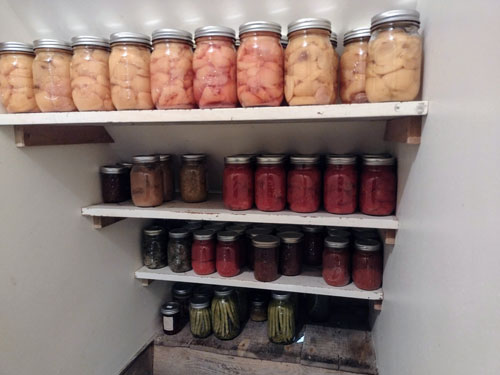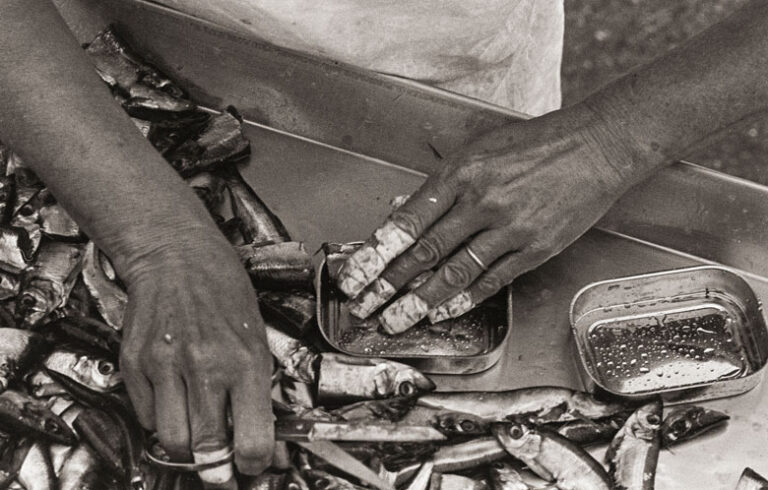Green beans, tomatoes, peaches, and corn! Late August and September give us a summery abundance in cooler portions of Maine even as chain grocery stores lay out pumpkins and move apples to the front of the produce section.
With peaches still on the tree, I’m hardly in the mood for Halloween or apple pie.
Summer is winding down, for sure. Cooler overnights (good sleeping weather) and the equinox prove fall is on the way. I’m taking stock of how this summer went. Finally, a good growing season. I’d nearly forgotten what a good one was like, especially after last summer. If you don’t remember, I’ll spare reminding you.
The sorest loss in 2023 was the peaches whose buds were blasted in cold winds and 16-below-zero one February weekend. You can imagine the joy when peaches this year filled branches and turned red-cheeked.
I’ve filled mason jars full; good use for small peaches whose skins slip off easily after being scalded…
I’ve filled mason jars full; good use for small peaches whose skins slip off easily after being scalded and slide into a jar without argument. A light syrup of two parts water to one of sugar is all that’s needed. I usually leave one pit in the jar to intensify the peach flavor.
The peaches that pick themselves and get slightly bruised when they hit the ground are the main ingredient in peach chutney, simply my favorite for chutney and cheddar sandwiches, or adding to any curry dish at all, or to enliven boring old chicken breasts.

The green beans grew heartily this summer. Plants, sturdily upright and deep green, yielded up two plentiful pickings, plus a respectable third, and 15 quarts plus five pints of dilly beans resulted, along with a handful of meals.
Provider is my favorite variety; the beans grow straight and long, hence the need for quart jars. One garlic clove plus a fresh, green, dill-seed head and one dill flower head per jar ensures strong dill presence.
Tomatoes! Now we thank my renovated hoop house which keeps the tomatoes warm overnight and even ripens some by the end of July. Slicers, I notice, are popular among the sandwich crowd, the primary cause being, I suspect, BLTs.
However, a chopped tomato combined with chopped cucumber in the bottom of a salad bowl stirred up with a bit of mayo and slivers of basil, over which one scatters lettuce in bite sized pieces, makes my favorite self-dressing salad when you toss the whole lovely mess together.
I like plum tomatoes, myself. I scald them, slide their skins off, plop them into a canning jar, sometimes with a leaf or two of basil, or a clove of garlic, and some coarse pickling salt. Preserved in this way, they are at their most flexible in the kitchen.
I used to make quarts and quarts of sauce until a housemate simply hit a panful of whole canned tomatoes with an emersion blender to whirl it into sauce. I used to have gobs of tomato seeds which I dumped into the compost pile and which sprouted up handfuls of little seedlings in the spring, but now we eat them. Some say tomato seeds make the sauce bitter, but you couldn’t prove it by me and the local supertaster claims he can’t discern bitterness.
And now corn. We eat corn on the cob until we get silly from it. Supper after supper, corn cooked immediately after picking leaves us glassy-eyed. Some I shave off the cob to freeze for winter corn chowder or shepherd’s pie. Some I turn into corn relish, a recipe learned from my friend Sharon.
For some reason, I had the idea I wouldn’t like it, maybe because of my predilection for butter and salt on corn. The idea of adding sugar and vinegar to corn seemed odd.
“Taste this,” said Sharon and I did. “Wow,” I said, “this is good!” “I knew I’d convert you,” she said. So now, corn relish joins the dilly bean and cucumber-based pickle and relish line-up on the shelves in the cellarway.
Since last fall, through the winter and spring, jars full of favorite veges disappeared from the shelves, one by one, just as the level of potatoes, carrots, beets dropped in the storage buckets hung from joists in the cellar, like a tide receding slowly but surely.
This time of year, the tide of vegetables flows in, and by the end of October, joined by apples and bunches of onions strung on loops of string, a winter’s worth of enough is ready to eat.
On the shelves, golden peaches, scarlet tomatoes, dark green beans, and calico yellow, green and red flecked relish sit, glowing plentifully.
Summer in a jar.
Sandy Oliver is a food historian who gardens, cooks, and writes on Islesboro. She may be contacted at SandyOliver47@gmail.com.





